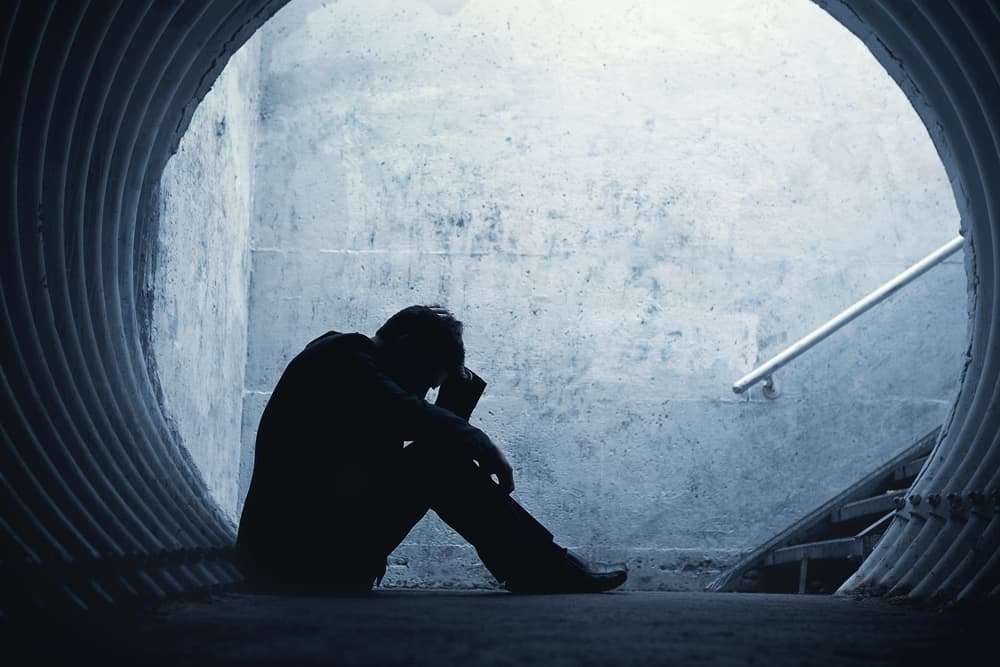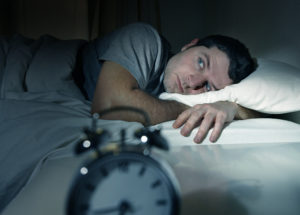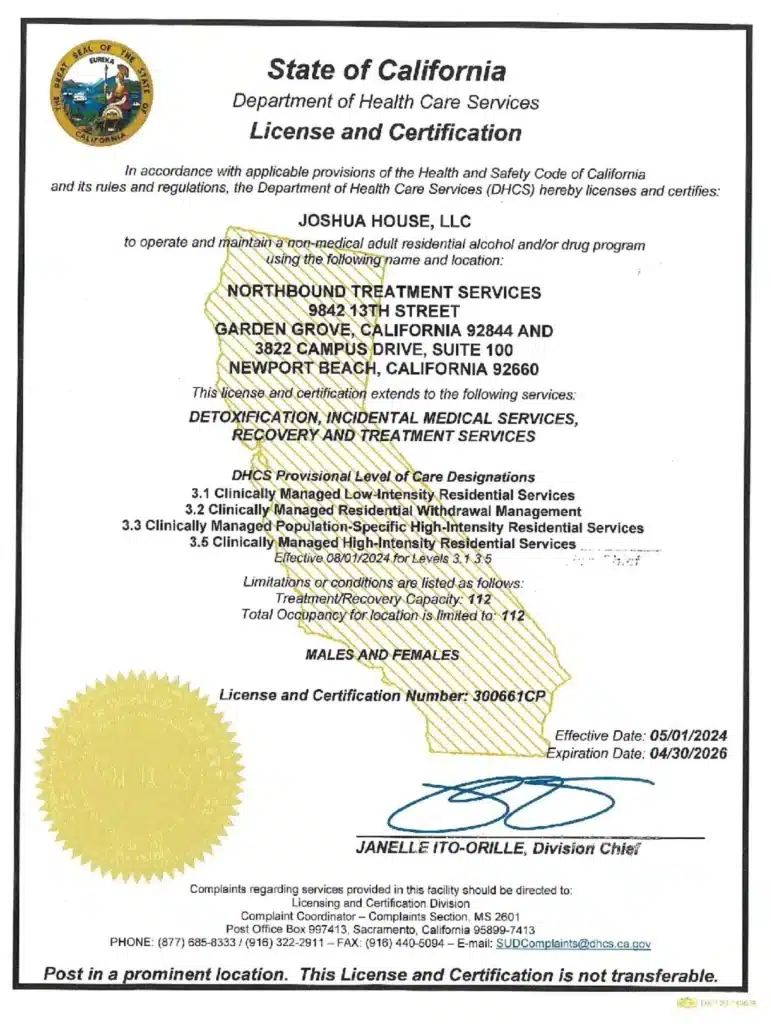Heroin is a dangerous, addictive drug, but what makes heroin addictive? Heroin affects the neurons in the brain. We rely on our brain to regulate our basic functions and when there’s a change, it can have a detrimental effect on how we think, act, and feel. The brain is made up of a system of neurons, each organized to control specific networks and manage the flow of information. When sending messages to different parts of the body, a neuron releases a neurotransmitter, which crosses the synapse and attaches the receptors of the receiving neuron, thus issuing the signal.
When heroin is added to this process, there’s interference in the way neurons are able to communicate. Heroin’s chemical structure mimics natural transmitters in the body that allows us to feel relaxed or reduces pain. Over time, the neurons adapt to the presence of heroin in the system and start functioning as a new norm. The brain builds a tolerance to use and begins to require more of it to start feeling the same effects.
Why is heroin so addictive? It’s due to the chasing of a high that will never be achieved in the same way. There will always be more heroin needed to feel as good as the first dosage, which leads to drug dependence, and ultimately, drug addiction. In the addiction state, the body cannot go without having heroin in the system and will react severely as a result via painful withdrawal symptoms. Because of this, people continue the cycle of drug addiction by continuing to “feed it.”
Another factor that contributes to its highly addictive nature is how it affects your natural responses to normal rewards. The brain of someone who is addicted to heroin adjusts to constant use by producing fewer neurotransmitters in the reward circuit. This results in the person’s decreased ability to experience pleasure in normal ways, such as exercising, eating, and socializing, activities that don’t involve the use of addictive drugs.
Using heroin to achieve a state of euphoria is short-lived and begins to diminish the body’s natural capabilities. This causes the heroin “fog” that is often referred to and why insomnia, depression, and agitation are common symptoms of heroin addiction. Additionally, this constant seeking of pleasurable, rewarding feeling is what triggers cravings. Heroin produces a much larger surge of dopamine compared to natural pleasurable experiences and as a result, it’s “rewiring” the brain to believe that addictive drugs are the only way to reach those happy feelings.
Areas of The Brain Affected By Heroin Abuse
Different areas of the brain are responsible for triggering signals for different body functions. In addition to the basal ganglia, which form the “reward circuit” that delivers feelings of pleasure, the extended amygdala and prefrontal cortex parts of the brain are also negatively impacted by drug use.
The extended amygdala is involved in feelings of stress, such as irritability, discomfort, and anxiety. After increased drug use, its circuit becomes increasingly sensitive. A person addicted to heroin seeks temporary relief from this discomfort versus getting high.
Drugs affect the prefrontal cortex in a similar fashion. The prefrontal cortex controls the ability to think, problem solve, make decisions, and exert self-control. When the balance is shifted to the reliance on heroin use versus the reward circuit, it reduces impulse control and makes a person seek the drug compulsively. Even if a person believes they want to quit using, the change to the brain says otherwise.
Heroin addiction can happen to anyone at any time. The opioid epidemic has proven how easily accessible prescription medication is and how harmful it can be. In addition to the level of street drug heroin already being abused, addiction continues to affect millions of people nationwide year after year.
Short-Term and Long-Term Effects of Heroin Addiction
The addictiveness of heroin controls every aspect of the mind and body. Short-term common effects include dry mouth, nausea, vomiting, severe itchiness, and a clouded state of mind. People who abuse addiction experience what’s referred to as going “on the nod,” which is the back-and-forth between being conscious and semiconscious. It can cause changes to a person’s physical appearance (weight loss, dilated pupils, lack of personal hygiene) and result in negative behavior (agitation, antisocialness, depression).
The long-term side effects of heroin addiction include infection or malfunction to nearly every part of the body. These may include insomnia, liver and kidney disease, heart infections, lung complications, among others. Also, people who suffer from drug abuse and addiction often are diagnosed with co-occurring mental disorders. The damage that heroin does is cumulative due to its highly addictive nature.
The increased frequency and dosages increases the risk of harmful, sometimes irreversible, damage. Fortunately, there are different levels of treatment to seek care and overcome your opioid addiction with the help of others.
Types of Addiction Treatment
Addiction treatment involves detoxification, residential rehabilitation, outpatient treatment, and addiction recovery services. Typically, all of these are recommended in sequential order as a complete round of care. However, for those who have sought treatment previously and want to prevent relapse or need extra support, the last two phases of care are optimal choices with the pretense of detoxing first.
Phase 1: Detox
Detoxification is always the first step of treatment because the body needs to be rid of all chemicals and toxins that can hinder healing and recovery. This process takes seven to ten days and is best when part of a medically managed treatment program. The withdrawal symptoms a person experiences during this phase of care are extreme and can have unpredictable effects on a person’s state of physical and mental health. By having constant monitoring in a secure environment, this serves a safe, more successful route of care.
Withdrawal symptoms for heroin addiction start within only a few hours after the last dose. They feel the most severe in the first few days and begin to taper off as you near the end of the heroin detox period. Withdrawal symptoms may involve:
- Restlessness
- Several muscle pain
- Insomnia
- Vomiting
- Cold flashes with the presence of goosebumps
- Uncontrollable leg movements
During the heroin detox period, intense signs and symptoms like hallucinations, seizures, and tremors may also take place. This is in addition to battling severe heroin cravings. Attempting to go through the detox process alone is difficult and dangerous. Typically, once the pain and discomfort begins, relapse occurs to put a stop to them. Plus if you suffer from seizures, breathing complications, or any kind of adverse heart event, you’ll want medical personnel with you who can monitor your care and stabilize your health.
The length of time and severity of your symptoms is dependent on your level of addiction. The detox timeline is affected by how long you’ve been addicted and how well your body reacts to the changes. If you are someone who’s struggled with addiction for several years, the side effects may linger at a lesser level for several weeks, sometimes months.
Phase 2: Residential Rehab
The next phase of heroin addiction treatment is structured to support sober living, improve your health, and start planning for life outside of treatment. Residential rehab is recommended for three months and intensive outpatient care (IOC) is recommended for four. Each treatment plan is designed to meet each person’s specific needs, which means you may require more or less time to complete.
You’ll work with your own care team of doctors and therapists who will work with you through treatment by implementing evidence-proven therapeutic techniques and educational learning about addiction. During residential rehab, you will stay temporarily at the treatment facility. This is an opportunity to reside in a peaceful, safe space conducive to your treatment away from the temptations and influences that you’ve just left.
A daily schedule example begins with morning meditation and breakfast. Then, there is individual counseling, group therapy, educational, physical activity, and recreational opportunities, as well as time for other meals and to spend time on your own. The routine prompts you to follow a new healthy way of living to carry with you once your heroin addiction treatment is complete.
Phase 3: Intensive Outpatient Care
Outpatient therapy is a continuation of care from residential treatment. It allows you the freedom and flexibility to reside in your home or another safe living environment as you receive weekly treatment. The requirements include a minimum of nine hours per week based on what works for your schedule.
The intensive treatment program builds upon the strategies necessary with confidence in your recovery. It involves much of the same techniques and education as residential rehab, with the addition of the 12-Step engagement, psychiatric care as needed, and ongoing drug testing. There’s also the option of participating in one of Northbound’s signature services, including Collegebound®, Careerbound®, LINKS, Music Therapy, or Trauma Program.
Each of these are focused on specific goals of the individual, whether that includes mentoring to prepare for school enrollment, assistance with job placement, or the promotion of further healing through the power of music. Participants can choose the course of care that most benefits their needs.
The addictiveness of heroin changes your brain’s capacity to think and feel in positive ways, but each of these phases helps to change your life for the better. Seeking addiction treatment gives you back control and starts the pathway to a happier, healthier future.
Sources:
- National Institute on Drug Abuse. “Drugs and the Brain.” National Institute on Drug Abuse, 10 July 2020, www.drugabuse.gov/publications/drugs-brains-behavior-science-addiction/drugs-brain
- National Institute on Drug Abuse. “Heroin DrugFacts.” National Institute on Drug Abuse, 16 June 2020, www.drugabuse.gov/publications/drugfacts/heroin
Author
-

President, CEO & Founder at Northbound Treatment Network
Paul Alexander is the CEO, President & Founder of Northbound Treatment Network in Newport Beach, California. He believes wholeheartedly in transformational leadership, organizational health and effective, fully integrated substance use disorder and mental health treatment. With over 27 years of experience in behavioral healthcare, Paul has extensive knowledge of “in vivo” treatment modalities, clinical development, operations, strategy, marketing and financial planning. He has been widely recognized for his development of collegiate-based residential treatment programs for students in recovery and authored a research study at The University of California confirming this modality’s effectiveness.
Paul’s comprehensive professional experience, willingness to innovate, and emphasis on organizational health are vital factors in Northbound’s continued success. Paul received his Certified Addiction Treatment Specialist training at Saddleback College in Mission Viejo, CA, and was awarded Outstanding Alumni Service Award in 2002. Paul holds a Bachelor of Arts degree in Criminology, Law and Society, Summa Cum Laude, from University of California, Irvine, and a Juris Doctorate degree from Loyola Law School of Los Angeles. Paul currently serves on The National Association of Addiction Treatment Providers (NAATP) board. In addition, he serves on The Family Recovery Foundation board and The CarePossible board in Orange County; both organizations are committed to raising funds for family recovery and treatment for former military personnel. Paul is in recovery himself and lives in Orange County with his wife Silvana and his two young sons, Noah and Dean.







